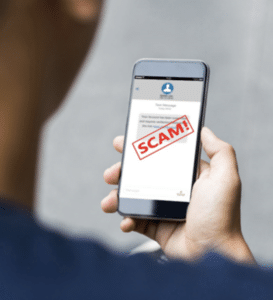Protect Your IT With Strong Cybersecurity Practices

The end of the year is a time when businesses are wrapping things up. This sense of closure, coupled with the fact that people are taking time off, brings everyone’s guard down. While letting your guard down may be good for your family, it’s not the best idea when it comes to cybersecurity.
Cybercriminals are savvy and look for opportune times to conduct their attacks. They know the holiday season is a great time to take advantage of people’s generosity and goodwill. The best defense for your business is to understand the tactics bad actors use to infiltrate IT security. To that end, we’ll consider seven best practices to protect your organization as the end of the year rolls around.
7 Best Practices to Help Secure Your IT Infrastructure
1. Install software updates and patches promptly.
Security patches are created in response to developing threats and are usually released because the threat is deemed too serious to wait until a major software update. Installing patches as they become available helps businesses mitigate risk by ensuring vulnerabilities exist for as short a time as possible. Additionally, having policies to keep up with updates when employees are out of the office and during downtime (especially at the end of the year) helps keep your business systems running smoothly.
2. Use strong passwords and change them regularly.
It’s estimated that 81% of data breaches happen because of poor passwords. A seemingly small change can make a huge difference in your organization’s security. The end of the year is a great time to prompt employees to change their passwords. When doing so, encourage them to use 16 characters or more, as this strengthens password security.
3. Restrict access to sensitive data to authorized users only.
By restricting access to what’s strictly necessary, companies can reduce the risk of unauthorized users accessing and compromising that data. When attacks are likely, such as during the holiday season, reviewing your access policies helps ensure there are fewer people who can possibly mishandle sensitive data. Another reason is compliance. Many regulatory bodies require companies to restrict access to sensitive data in order to meet compliance requirements.
4. Educate employees on cybersecurity best practices.
Education is one of the best ways to defend against potential security risks. Training should be relevant to employee jobs to keep them engaged; the less generic, the more likely they are to heed the warnings. Training can include topics like the dangers of clicking on links, opening attachments from unknown sources, using strong passwords, and keeping their personal devices updated. Why not schedule training right before security is on high alert and send out a refresher when employees are more likely to let their guard down?
5. Protect against phishing scams and malware attacks

New phishing scams and malware attacks arrive daily, so there’s no way you can train on the specifics. But you can help your employees practice good cyber vigilance to recognize the signs. For example, they should be aware of the red flags of a scam email or phishing call, such as poor grammar or requests for personal information from people they don’t know. They should also be cautious about approving application authorizations if they don’t have explicit knowledge of who’s requesting it. Tips like these could be included in the cybersecurity refresher we recommend sending out.
6. Use two-factor authentication whenever possible.
Two-factor authentication is a cybersecurity best practice that requires employees to use two forms of identification to log in to their accounts. So even if a password becomes compromised, the hacker still needs a second authentication. In fact, a 2019 Microsoft report found that two-factor authentication blocked 99.9% of automated attacks.
7. Have a plan in place for dealing with a cybersecurity incident.
Whatever your efforts, no security plan is impenetrable. And a cybersecurity incident can have many negative consequences for an organization, including loss of data, decreased productivity, and financial damage. Having a plan in place will help you mitigate the effects in case of an incident. This plan should include steps for preventing and responding to incidents, as well as procedures for communicating with stakeholders.
Don’t Stress. Take the Proactive Approach Instead
At the end of the year, security isn’t always top of mind. By educating your organization on how to work securely, you mitigate many of the dangers hackers use during the holiday season.
It’s also possible you’re looking for a partner to help fortify your security practices or provide needed security leadership. If that sounds like you, visit our IT security services page to learn more about what we offer. We’re here to help!
Stay safe out there, and happy holidays!
Frequently asked questions…
Why is patch management important?
Patch management is important because it helps to ensure that software and systems remain up-to-date and secure. By regularly applying patches, organizations can fix vulnerabilities and reduce the risk of cyberattacks or other security breaches. Additionally, patch management can help to improve system performance and reliability.
What is incident response in cybersecurity?
Incident response is the process of identifying, investigating, containing, and recovering from security incidents in order to mitigate the impact of a cybersecurity breach or attack. The goal is to minimize the damage caused by the incident, prevent it from spreading, and restore normal operations as quickly as possible.
What type of password are hardest to crack?
Having a long mix of upper- and lower-case letters, symbols and numbers is the best way make your password more secure. The safest way to protect passwords is to use a strong, unique password for each account, and to store them securely. Security experts recommend using passwords of at least 14 characters.
Additional Resources:




